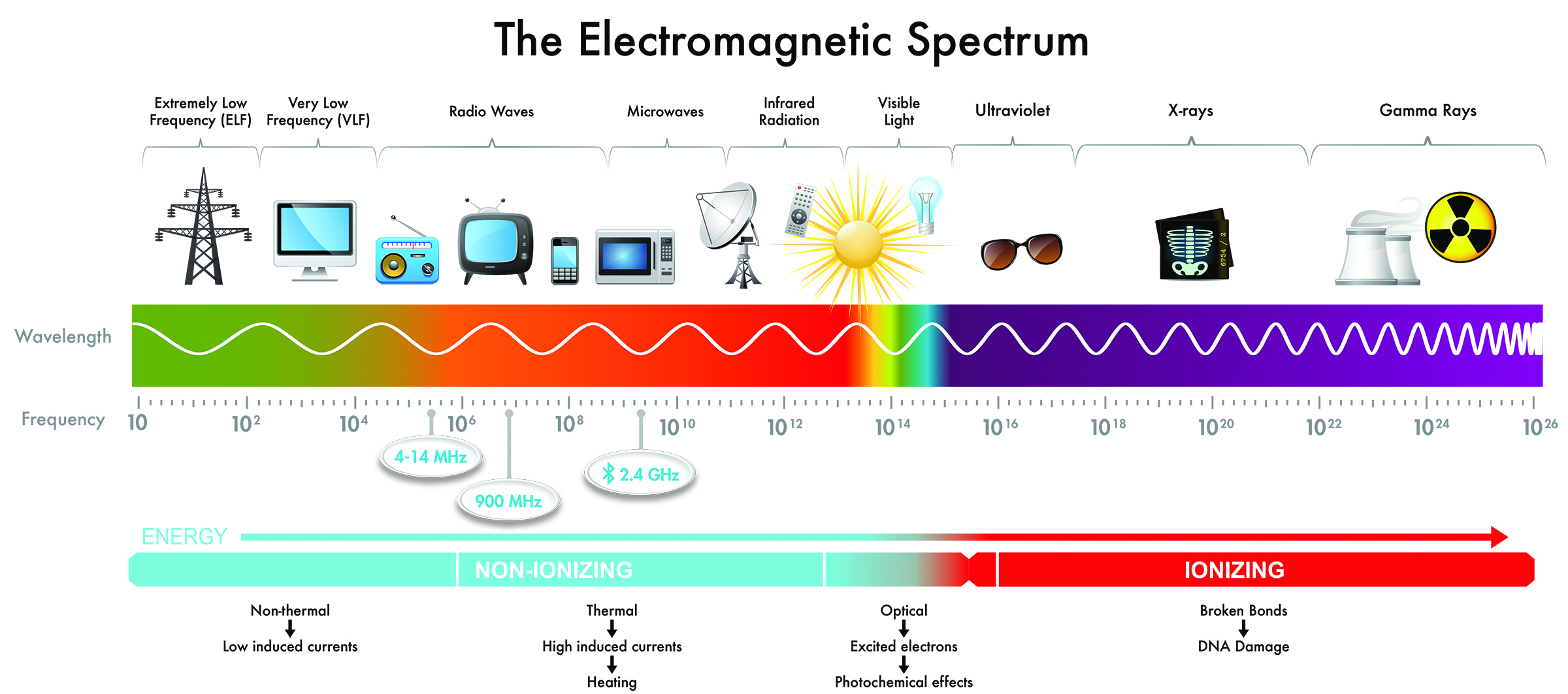The radiation from RF-EMF can cause damage to DNA, heat up of tissues and alter the blood brain barrier. These effects are real and ARPANSA is actively involved in discussions with EHS group, the medical experts, and researchers. ARPANSA will continue to examine research regarding the health impacts of EMF radiation.
RF-EMF can cause DNA damage
Exposure to man-made electromagnetic fields (EMFs) can cause DNA damage and other negative health consequences. EMFs can disrupt the intracellular ionic levels that are vital to maintain a cell's electrochemical balance. It can also disrupt cell homeostasis, resulting to DNA destruction. Furthermore exposure to EMFs is also associated with an increase in the production of free radicals and reactive oxygen species (ROS).
Exposure to RF-EMF radiation has been linked to changes in male germ cell development. This involves the development of germ cells into spermatozoa as well functioning maturation as spermatozoa travel through the epididymis. To investigate the sensitivity of RF-EMF exposure to male germ cells, a specially-built waveguide machine was constructed for the exposure of mice without restriction to RF-EMF in the range of 2.2 W/kg.

In Click for more found that exposure to RF-EME causes the oxidative DNA damage of spermatozoa. Sperm DNA fragmentation increased by 18% following one week of treatment and by 23% after five weeks. Furthermore, DNA damage in mitochondria was observed by measuring the level of a biomarker, 8-hydroxy-2-deoxyguanosine (8-OH-dG).
Although the radiation emitted by RF-EMF isn't yet recognized as a true carcinogen. But, several studies have revealed that RF-EMF exposure can impair the integrity of DNA in range of cell varieties. In one study researchers were exposed Vero cells to an EMF that was 100Hz, for 45 minutes. They assessed DNA damage for at 48 hours following exposure to determine whether the exposure affected the integrity of DNA.
The effect of RF-EMF on tissue heating
While the effects of RF EMF are generally thought to be thermal, a few studies have demonstrated that non-thermal effects are also present. These factors could be responsible for certain of the unsolved findings in epidemiological studies on EMF hypersensitivity. Therefore, it is important to consider the non-thermal effects when conducting a systematic review.
The non-thermal effects that RF-EMF can have may occur at the cell membrane. This is a field of research that has been thoroughly studied. Particularly the electrochemical behavior of cell membranes has been investigated. The current understanding is that RF-EMF energy higher than 1 MHz is transferred to tissue via dielectric and the dissipation of ions. Previous theoretical analyses indicated that the energy transferred to the tissue could be as high as 200 kV/m.
The electrical properties of tissues are controlled through the distribution and composition of water molecules, and other molecules in the body. This determines how absorbent EMR RF is by various tissues. Tissues with higher conductivity tend to absorb more of the EMR field and produce more of an effect. emf radiation symptoms is why the level of heat generated by tissue does not increase steadily between the outside and inside the body however, it is more prevalent in hot spots. Bone and fatty tissues are less susceptible to RF heating than other tissues because they have a low water content.
The depth of the field's penetration depends on the frequency and strength of field. Muscle tissue absorbs more field radiation than most tissues, and transforms it into heat more efficiently. Typically, the depth of penetration that RFEMF has is measured in millimeters (mm). But, the greater the frequency, the more shallow the penetration.
RF-EMF causes blood-brain barrier disruption
Researchers have discovered that RF EMF can alter the blood-brain-barrier change sleep patterns as well as neurotransmitter levels. Additionally the impacts on the effects of EMF affect brain function are linked to neurodegenerative disorders. For instance, EMF from mobile phones can affect electroencephalogram activity and sleep patterns, as well as the activities of nitric oxide and xanthin oxide.
Researchers from the Vienna University have studied the effects of exposure to RF-EMF on brain cells. They also examined how ELF EMFs on the brain system. While the mechanisms of the cell involved are not completely known but there is a clear connection between exposure to ELF-EMF and myelin depletion. This relationship might account for the electro-hypersensitivity symptoms of electro-hypersensitivity. There are, however, tested emf radiation to regenerate myelin inside the brain.
Researchers have observed that exposure to the frequency of 900 Mhz EMF caused a rise in the permeability of the BBB and also increased the indicators of neuronal injury in rodents. They also observed an increase in the extravasation of neuronal albumin. Additionally, they observed in 30 minutes 900 MHz exposure 99mTc-MIBI accelerated its permeation in the cortex. However this effect didn't occur with Evans blue injections.
Despite these findings, RF-EMF is not able to provide a definitive mechanism to disrupt the BBB. Evidence suggests that non-thermal EMF exposure may increase erythrocyte cell membrane permeability. This could affect the BBB and enhance the efflux of calcium ions. Furthermore, the presence a 99mTc-MIBI radiotracer within the brain is also associated with an increase in the permeability of the BBB.
